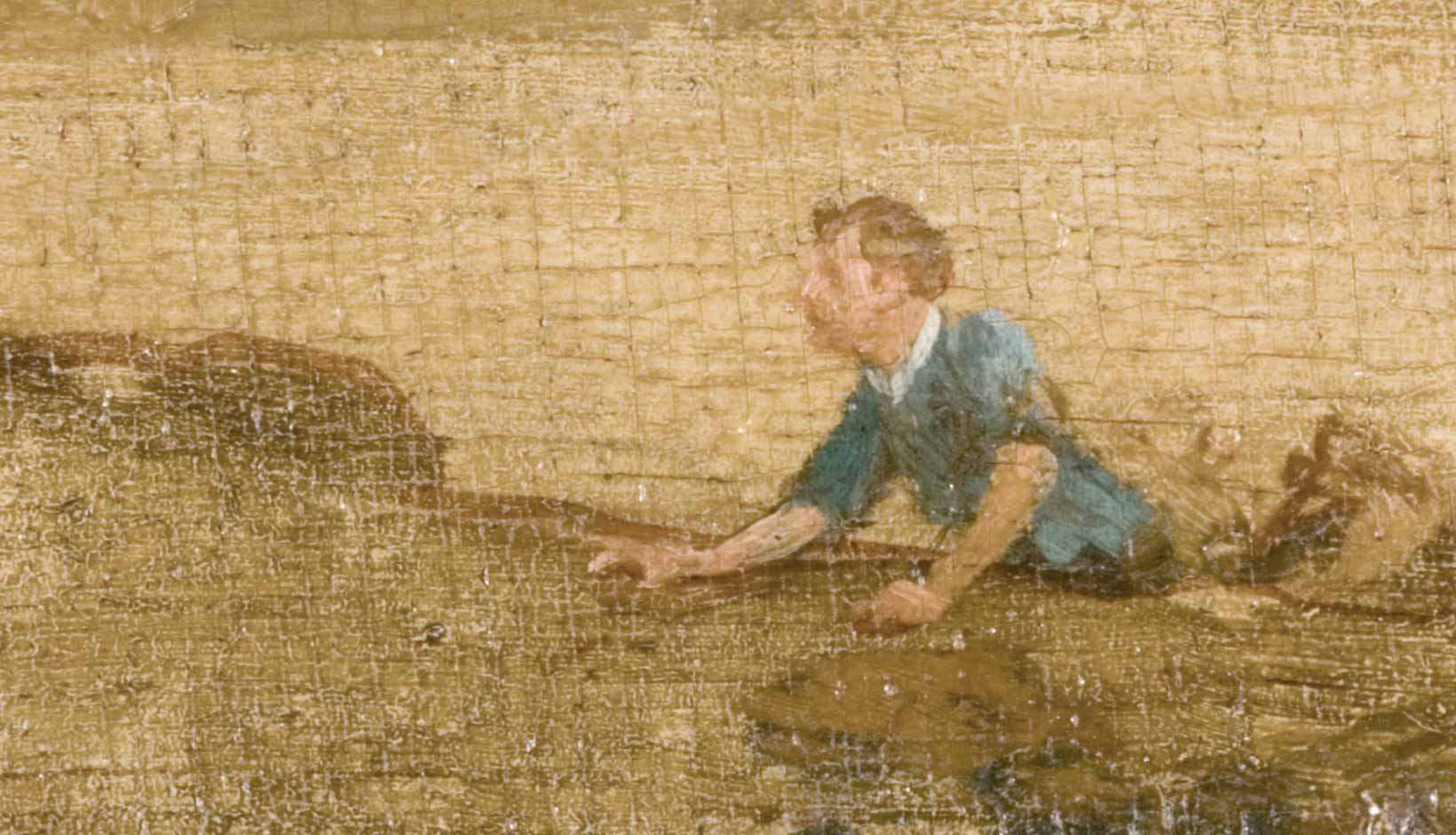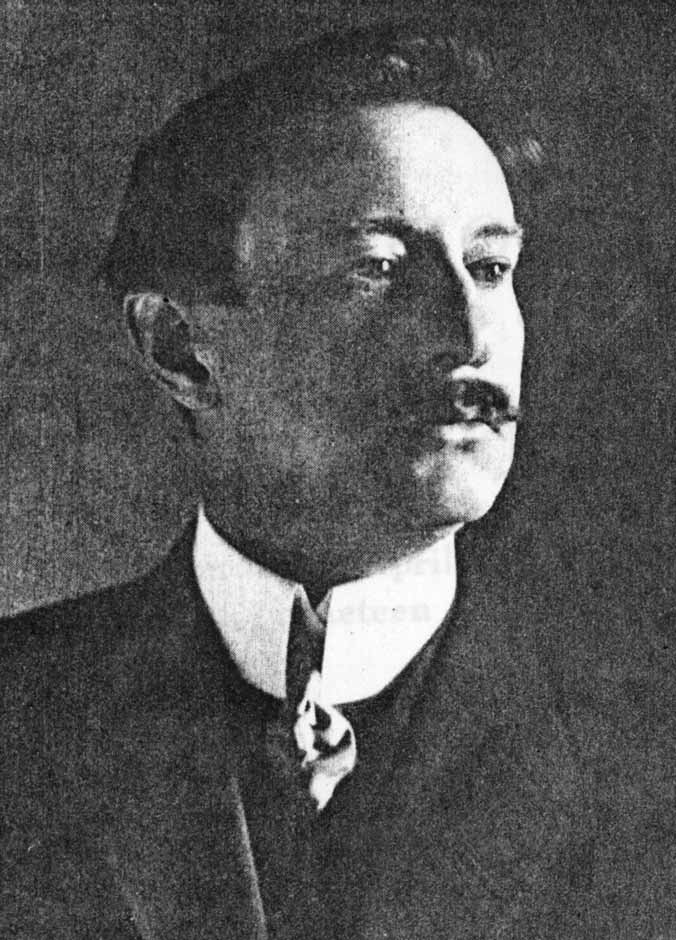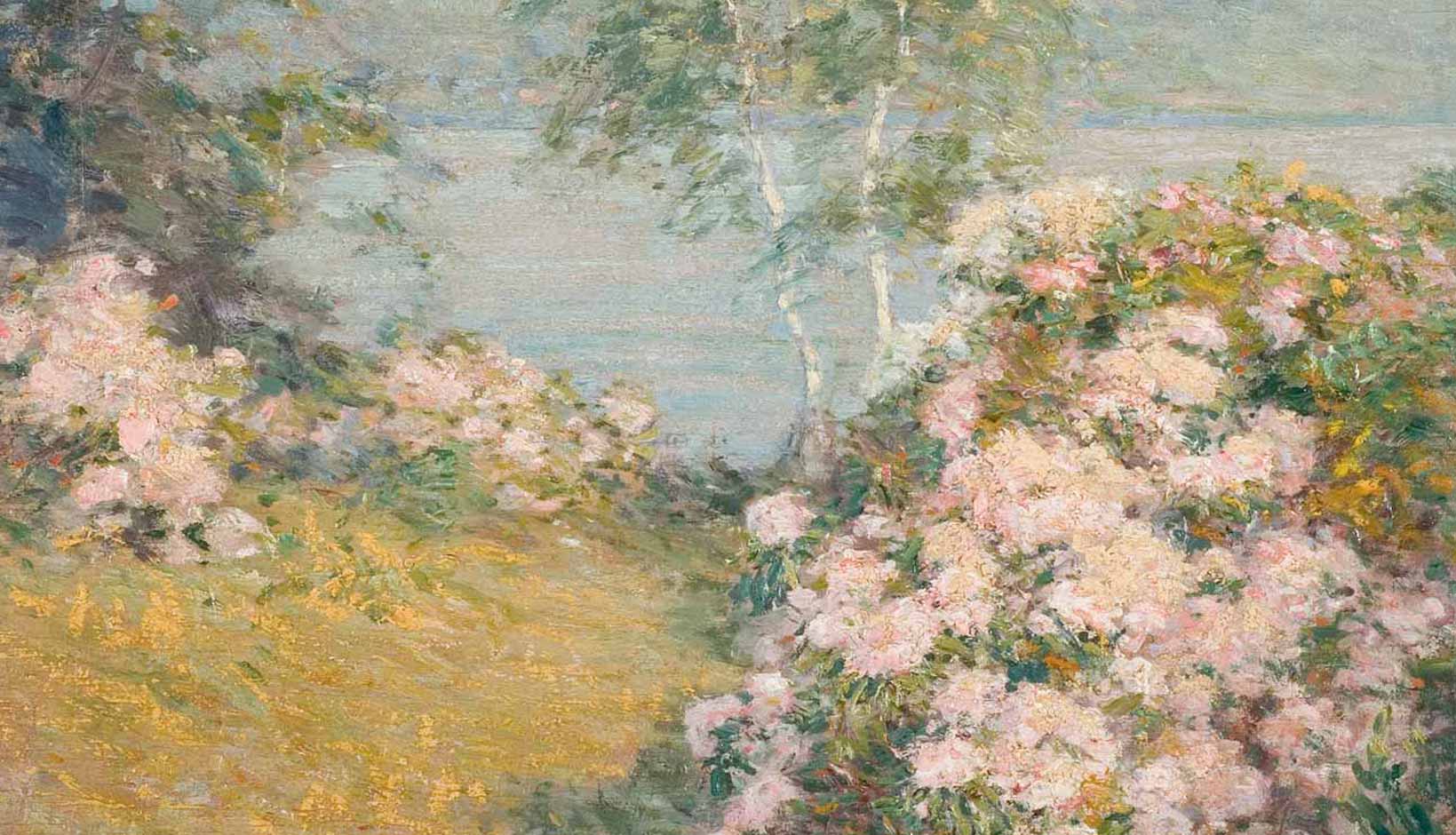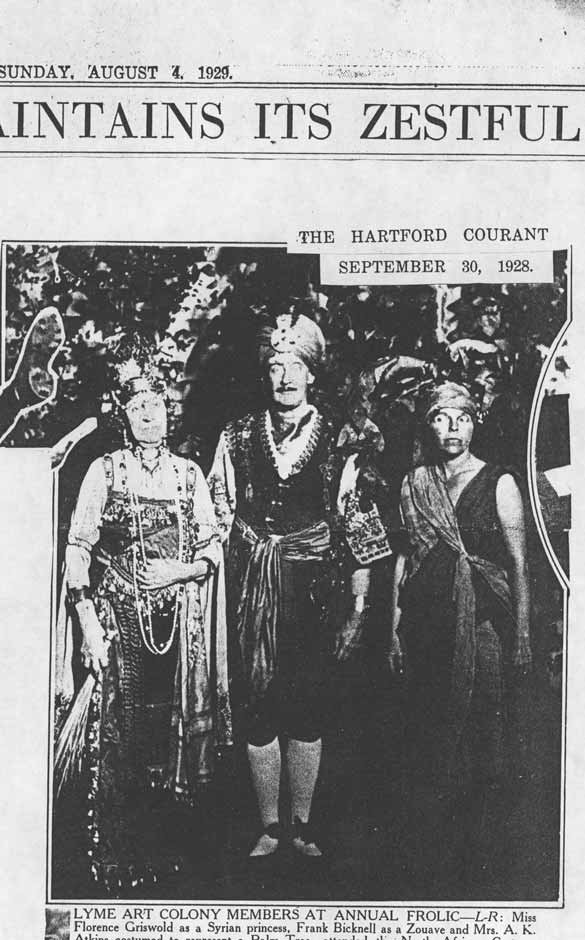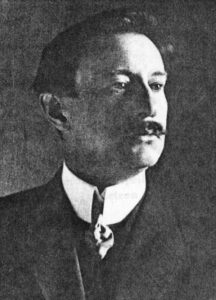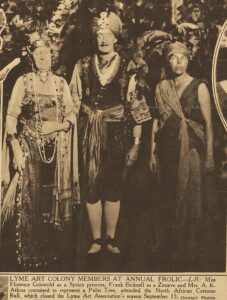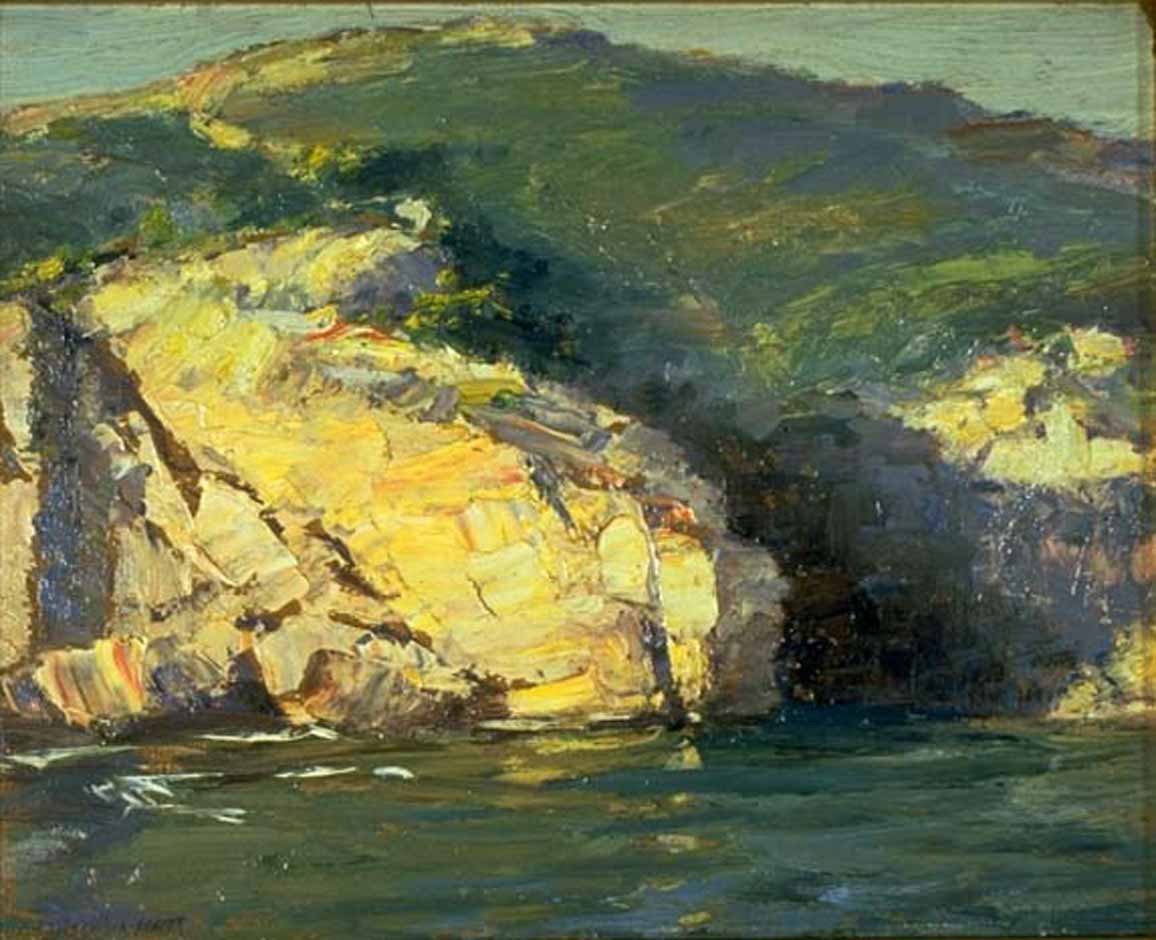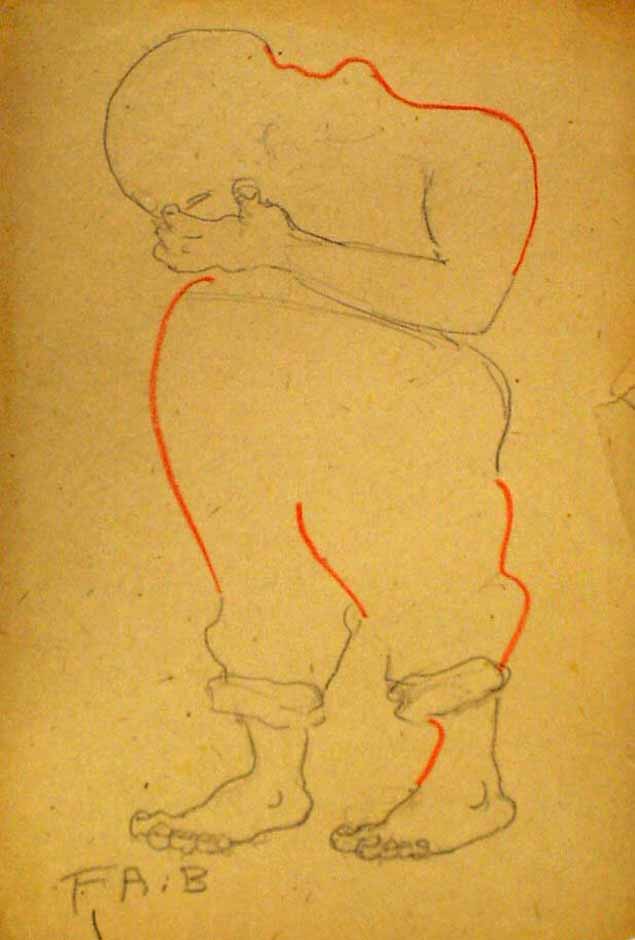Fox Chase
Frank Bicknell
- Museum Hours: Tuesday through Sunday, 10am to 5pm.
In The Fox Chase, Frank Bicknell is shown pulling himself over a small rise, looking up towards the bare-chested Childe Hassam painting at his easel.
Despite this somewhat clumsy caricature, Bicknell was described as “rather tall and slender with dark hair and a very light mustache” by an unidentified reporter for a San Francisco newspaper, who interviewed Bicknell as he prepared to board the S.S. Coptic to Japan in 1895. This was one of more than a dozen ocean voyages Bicknell would take during his life.
Frank Alfred Bicknell
Born February 17, 1866, Augusta, Maine
Died April 9, 1943, Essex, Connecticut
In Old Lyme, c. 1902-1940
Bicknell was a world traveler who visit Europe, Egypt and Japan. His art received early recognition in the Paris Salon of 1892. He purchased a house with fellow artist Lewis Cohen just up the road from Miss Florence’s.
Bicknell began his artistic training with his father’s cousin, the artist Albion Harris Bicknell (1837-1915), in Malden, Massachusetts. He later trained in New York and Paris. By 1892, not only was one of his paintings accepted into the French Salon, a statement of worldwide artistic acclaim, but it was hung at eye level rather than “skied,” a rare and desirable occurrence indeed for an American first timer. Once back in the United States, Bicknell rented a lush studio in the famed Towers of Madison Square Garden where he would host musicales for members of high society.
Although he was very social, Bicknell never married. Indeed, he was most likely gay and traveled often with companions to various fashionable and exotic locales. The New York society columns were filled with his travel exploits: “In November Mr. Bicknell will leave Paris with Mr. Jack Holbrook to spend the winter in Italy and on the Nile.” By 1902, he adopts the members of the Lyme Art Colony as his “family” and has long been considered one of Miss Florence’s favorites. He painted a panel with mountain laurel and birch trees for her dining room.
His letters to her are playful and intimate, suggesting that he would even stay in her barn if he had to. When in residence at the boardinghouse he would join in the fun, playing cards, and adding to the regular hi-jinks. He considered himself one of the “inmates” of the house.
After 1909, he would share the house and studio up the road with fellow artist Lewis Cohen, who eventually left it to Bicknell.
Pictured on right
Florence Griswold as a Syrian princess and Frank Bicknell as a Zouave.

After his first visit in 1902, artist Frank Bicknell spent decades in Old Lyme, where he found a second home after the sudden death of his partner, J.C.S. Parcher (1845–1903), while on a train between New York and their home in Boston. Bicknell and Parcher, a costumer and dressmaker, had traveled the world from Japan to Europe, and in the 1890s occupied an eclectically-furnished apartment and studio in the tower designed by Stanford White for New York’s Madison Square Garden. There, they hosted receptions and concerts that garnered notices in the city papers, as had their travels: “Mr. Bicknell’s studio has been the scene of some most delightful entertainments, both artistic and musical, and an invitation to one of his Monday afternoons is greatly sought for by society and artists alike.”
Perhaps because he arrived at a time of such personal loss, Bicknell described Florence Griswold and other art colony members as “family.” He became especially close to landscape painter Lewis Cohen, in whose house he would inherit a half interest when Cohen passed away. Observing Bicknell on a 1909 visit to the Griswold boardinghouse, future president Woodrow Wilson wrote to a friend, “Mr. Bicknell is a bachelor, and a very whimsical, delightful fellow, who can strike off excellent jests by merely giving his mind its natural play: a man of great charm of personality and very good to look at. I do not see how Madge can have spent a summer with him (last summer) and not fallen in love with him. He is the sort of man I should think women would fall in love with at once: and I do not often think that of a man.” In addition to painting outdoors alongside fellow art colony members, Bicknell used his craft skills to reupholster some of Miss Florence’s furniture when her artist boarders refurbished the house in 1910.
Bicknell would make a specialty of painting the Connecticut landscape with textured brushwork that was especially effective in his depictions of blooming mountain laurel. From 1919 to 1925, the artist served as an associate professor at the Carnegie Institute of Technology in Pittsburgh, now Carnegie Mellon University. There, he formed a relationship with Charles Graham Gibbs, who appears in Bicknell’s only portrait. The artist’s scrapbook has been preserved among Gibbs’s descendants, with a copy in the Museum’s archives. Bicknell returned to the Cohen house in Old Lyme, but with deteriorating health moved to a nursing home in Essex, CT, where he died in 1943.

